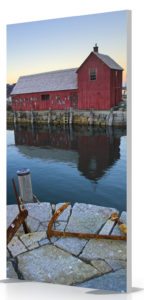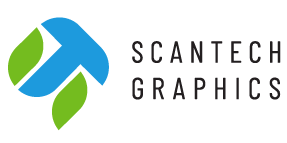The Growth of Digitally Printed Fabrics in the Décor Market
There is a lot of excitement with digitally printed fabrics. We’ve seen a tremendous growth of printed fabric in the tradeshow industry and now we’re seeing it used in airports, hospitals, and retailers. Printed fabrics are being used as frontlit, backlit and blackout applications. The most common method of displaying the graphics is using hardware called silicone edge graphics (SEG).
Exploring the buzz recently was Oliva Cahoon of Digital Output Magazine who spoke to leading industry suppliers, below they discuss materials, print processes and fabric illumination.
Luminescent Fabric
Lighting affects fabric’s appearance in frontlit, backlit, and blackout fabric applications. “As expected, an even distribution of light without pinholes is essential for light boxes”.
Paul Grider, director of product development and technical services, says fabric for frontlit applications needs sufficient opacity so outdoor direct sunlight or indoor artificial lighting does not burn the graphic and compromise the color and image quality. “In many SEG structures, a blackout lining or a coated blackback print media needs to be used,” he suggests.
Lighting affects fabric appearance in SEG systems, so products are typically designed for certain lighting conditions to maximize the print’s effect. “For example, there are certain products designed for utilization in an application where the light hits the SEG frame from the front, allowing the product to illuminate with vibrancy,” shares Jaimie Mask, product specialist, S-One Holdings Corporation.
Heather McCusker, wide format product line manager, Agfa Graphics believes backlit products with light from behind the image make the image pop, while frontlit products shine light on the image, adding a more enhanced view of the print.
Grider notes color temperatures from artificial light sources also impact a print’s appearance. “A print of a snowy mountain that is frontlit will require a light source with a cooler tone. If it’s a print of a tropical island, a warmer color temperature may be desired,” he says.
While end users usually choose traditional white LED lights, Lily Hunter, product manager, textiles and consumables, Roland DGA Corporation, notices some are starting to use different colored lights, like blue or pink, to make the graphics pop.
Print Processes
SEG fabrics are printed with dye-sublimation (dye-sub), direct disperse, UV, and latex printers. Mike Sanders, VP, Pacific Coast Fabrics, says the print process is dependent on the fabric, not on the application. He suggests direct disperse for light boxes due to its deep saturation.

Kylie Schleicher, marketing manager, Ultraflex Systems, Inc., believes latex and dye-sub are ideal ink types that maintain a soft hand and flexibility of the fabric.
“We have seen many customers prefer utilizing direct dye-sub to print backlit SEG, this output offers better color saturation, which is a plus for producing quality backlit,” agrees Eric Tischer, president, Verseidag US.
While sublimation transfer and direct printing are chosen for easy folding and shipping, McCusker finds value in UV printing. “UV is making a push at backlit SEG for its color vibrancy—UV prints just need to be handled with slight care in shipping,” she recommends.
Michael Compton, product marketing manager, Top Value Fabrics, believes both heat transfer printing and dye-sub direct produce beautiful graphics on any fabric. “The market for direct printing is trending upward with the launch of more direct print systems as well as inks providing excellent color and finished graphic print quality.”
Beyond Frames
SEG frames also provide easy change our of graphics, adding to their value and flexibility. Besides SEG frames, these fabrics are used for banners, exhibits, freestanding frames, home furnishings, photographic backdrops, point of purchase, retail, roll-ups, table throws, and wall mounts.
 Fabric weight is relative to the SEG system’s size. Large displays use heavy fabrics to keep the graphic smooth and tight while light fabrics are used for smaller SEG systems. Compton says fabric weight varies from four to nine ounces per square yard.
Fabric weight is relative to the SEG system’s size. Large displays use heavy fabrics to keep the graphic smooth and tight while light fabrics are used for smaller SEG systems. Compton says fabric weight varies from four to nine ounces per square yard.
With advancements in printing technology and LED lighting, digitally printed fabric has become an affordable, high-quality option for interior décor.
Curious if a printed fabric graphic might be right for your project? Give me a call (858-495-0727)
– Kevin Gennerman.
Scantech Graphics, located in the Kearny Mesa neighborhood of San Diego, has what you need to make it all happen.
